Why Gelephu International Airport is Bhutan’s Masterpiece in the Making

Key Features of Gelephu International Airport
• A Gateway to the South: Strategically located near the Bhutan-India border, Gelephu International Airport is envisioned as the southern gateway to Bhutan, anchoring the visionary Gelephu Mindfulness City.
• Expansive Location: Situated just 3 km from Gelephu town, the airport spans between 500 to 750 acres and features a 1,500-metre runway to accommodate international flights.
• Future-Ready Capacity: The terminal is designed to handle up to 123 flights a day, welcoming 1.3 million passengers annually by 2040 and scaling up to 5.5 million by 2065.
• Architectural Harmony: Drawing from Bhutanese heritage, the terminal showcases a modular timber design—crafted from locally sourced glulam—highlighted with intricate motifs like dragons and sacred Kachen pillars.
• Nature Meets Design: The airport’s arrival zone mirrors the biodiversity of southern Bhutan with four native-plant landscapes, while a central “Forest Spine” provides treetop walkways and shaded courtyards.
• Mindful Travel Experience: Spaces for yoga, meditation, and gong-bath therapy create a serene atmosphere, aligning the airport experience with Bhutan’s wellness-driven philosophy.
• Sustainable Innovation: The building’s passive cooling, open ventilation, and rooftop solar panels align with Bhutan’s commitment to environmental stewardship as the world’s only carbon-negative nation.
• Flexible Growth: Its modular timber frames are engineered for future expansion or reconfiguration, ensuring long-term adaptability without compromising design integrity.
• Seamless Mobility: A multi-modal transit hub links the airport to Gelephu and beyond, with provisions for buses and trackless trams to support low-carbon travel.
• Elevated Traveller Experience: The terminal design prioritises comfort and flow, with intuitive signage, upper-level boarding gates, and panoramic lounges that overlook both the apron and the distant Himalayas.
Gelephu International Airport Construction Timelines
8th July 2025 - Ground breaking ceremony
April 2025 - Main construction of runway and terminal
July 2026 - Installation of airport system
July 2028 — Aerodrome Certification Begins
March 2029 - Testing and commissioning
July 2029 - ORAT (Operational Readiness & Airport Transfer) Starts
December 2029 - Grand inauguration of Gelephu International Airport
Blending Bhutan’s traditional craftsmanship with modern innovation, the Gelephu International Airport (GIA) is strategically positioned near the Bhutan-Indian border and the Paitha River, surrounded by Bhutan’s lush subtropical forests, mountains, and rivers. As Bhutan’s second international airport, the project is a collaboration with aviation engineering firm NACO and an integral part of the Gelephu Mindfulness City (GMC) masterplan designed by BIG, Arup, and Cistri. With the capacity to handle 123 flights daily, it is projected to welcome 1.3 million passengers annually by 2040, increasing to 5.5 million passengers by 2065.
Set against a backdrop of the Himalayas, the airport’s diagrid structure is crafted from locally and sustainably sourced timber and adorned with traditional Bhutanese wood carvings by local artists. The painted façade draws inspiration from the ‘Kachen,’ a wooden pillar revered for its structural significance and intricate design, embodying Bhutanese architectural heritage and spiritual symbolism.
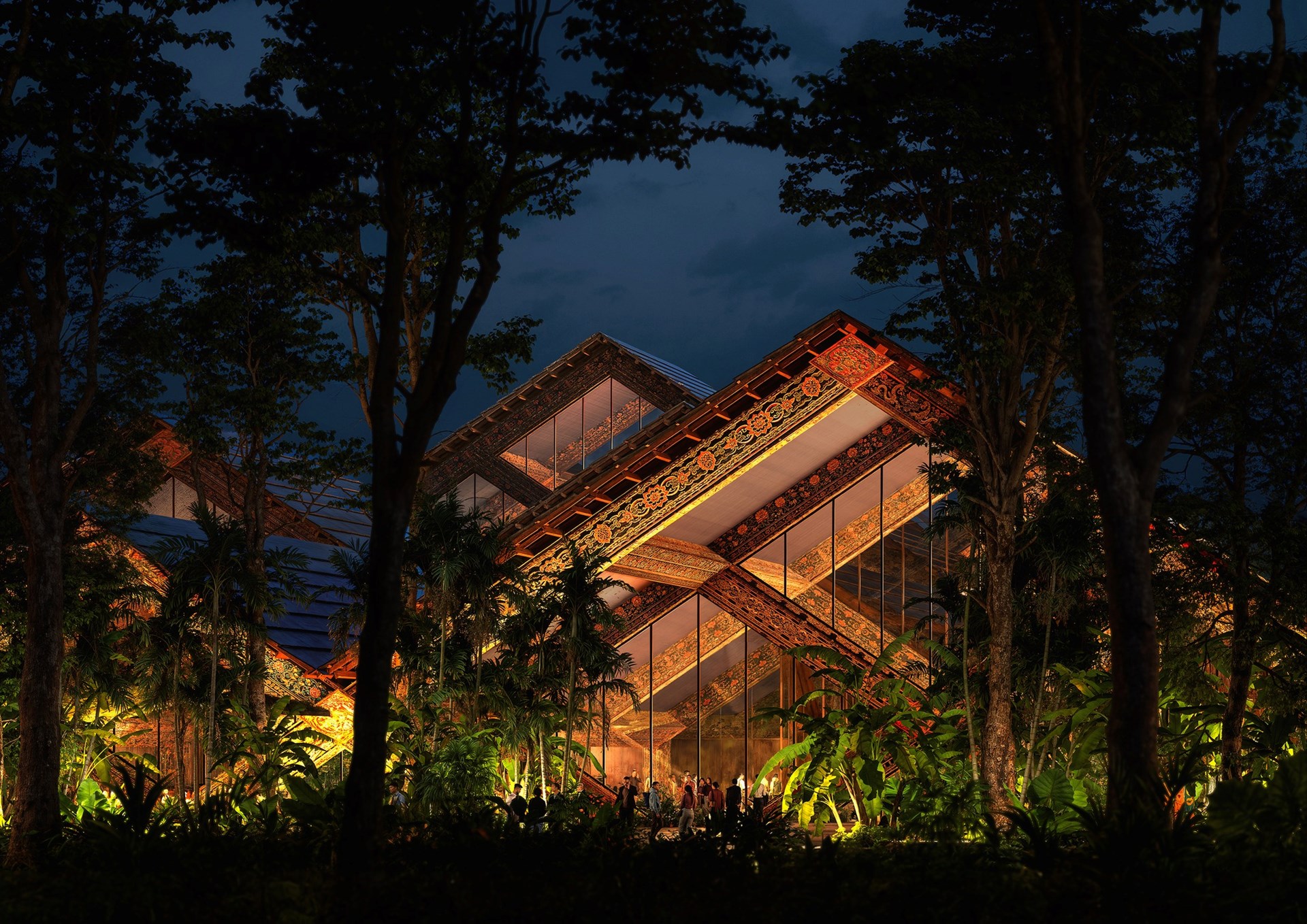
Architecture Inspired by Nature and Heritage
Designed to accommodate GMC’s projected growth, the airport’s timber frames are structurally independent, allowing for simple disassembly for future expansion. The airport’s roof features PV panels, in line with Bhutan’s position as a carbon-negative nation.
"An airport is the first and last impression you get of a place you visit. For the Gelephu International Airport, we have tried to embody the nature and culture of the country and the Mindfulness City. The forests that cover the highlands are allowed to flow from the arrival plaza through the airport all the way to the tarmac. Tropical trees provide shade for travelers, and the forest courtyard lines the main functions of immigration, security, and luggage. The airport architecture is composed of modular mass timber frames providing flexibility and expandability, resembling a stylized mountain range at a distance.
Upon closer inspection, all the mass timber members are carved and colored according to traditional craft, adorned with three types of dragons representing the past, present, and future of Bhutan. The result is traditional yet avant-garde, forward-reaching and rooted. For me personally, this unusual embrace of traditional craft and color is a true testament to how affected I have been by my encounter with Bhutan - the country, its culture, and its people," said Bjarke Ingels, the Founder & Creative Director of BIG.
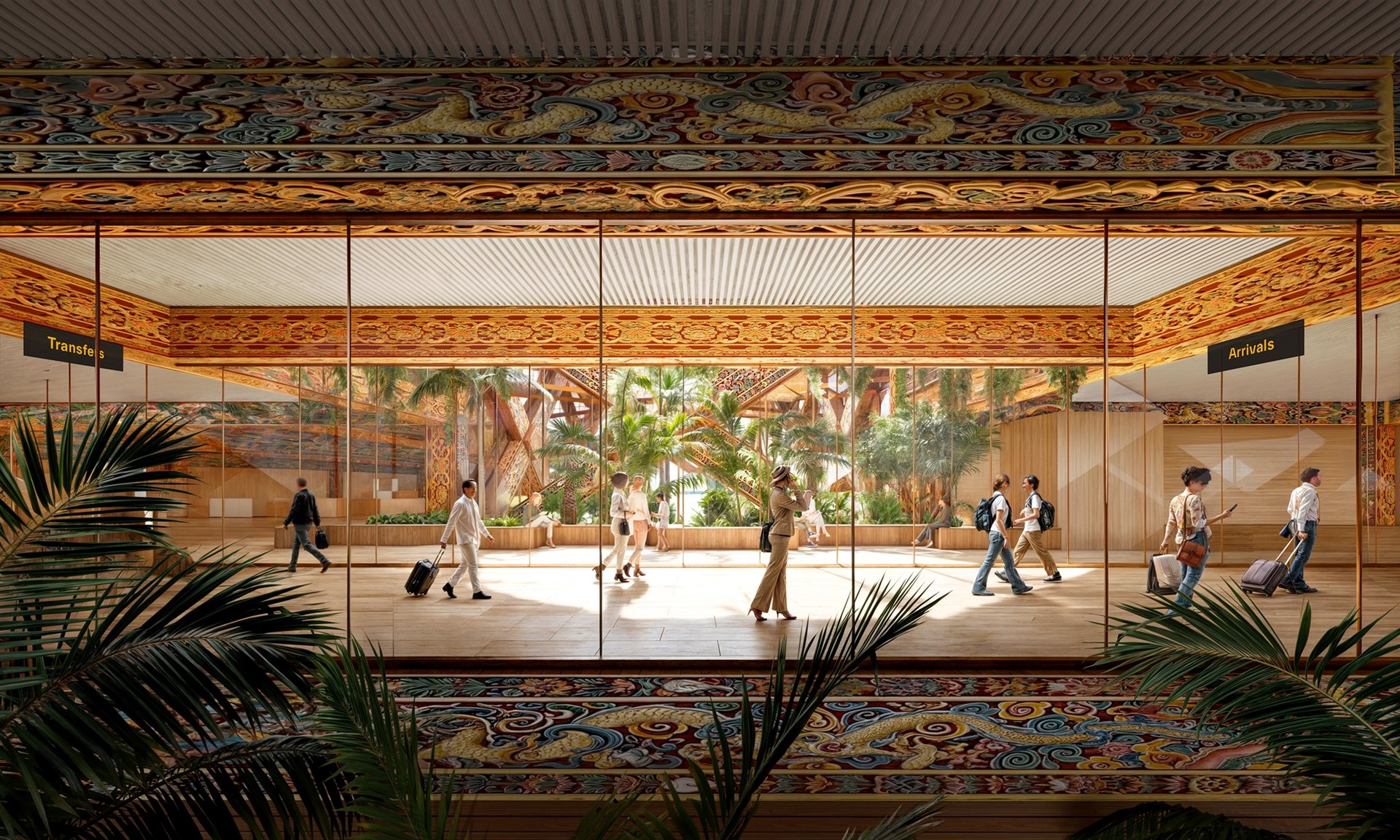
An Arrival Plaza Rooted in Local Ecology
Harmoniously blending into the surrounding natural terrain, the arrival plaza is designed as a series of four zones each dedicated to specific plants found within the forests in Gelephu. A gathering space features paving made from local natural stone and integrated seating areas, while abundant greenery and a canopy provide protection from the elements.
Bhutan’s biodiversity corridors are pulled into the airport and its interior courtyard. Aptly named the Forest Spine, the courtyard divides the terminal into two sections, with domestic flights on the west side and international flights to the east. Visually accessible from anywhere in the airport, the Forest Spine offers passengers a connection to nature even inside the airport, with tranquil green spaces, a treetop walkway, and indigenous fauna.
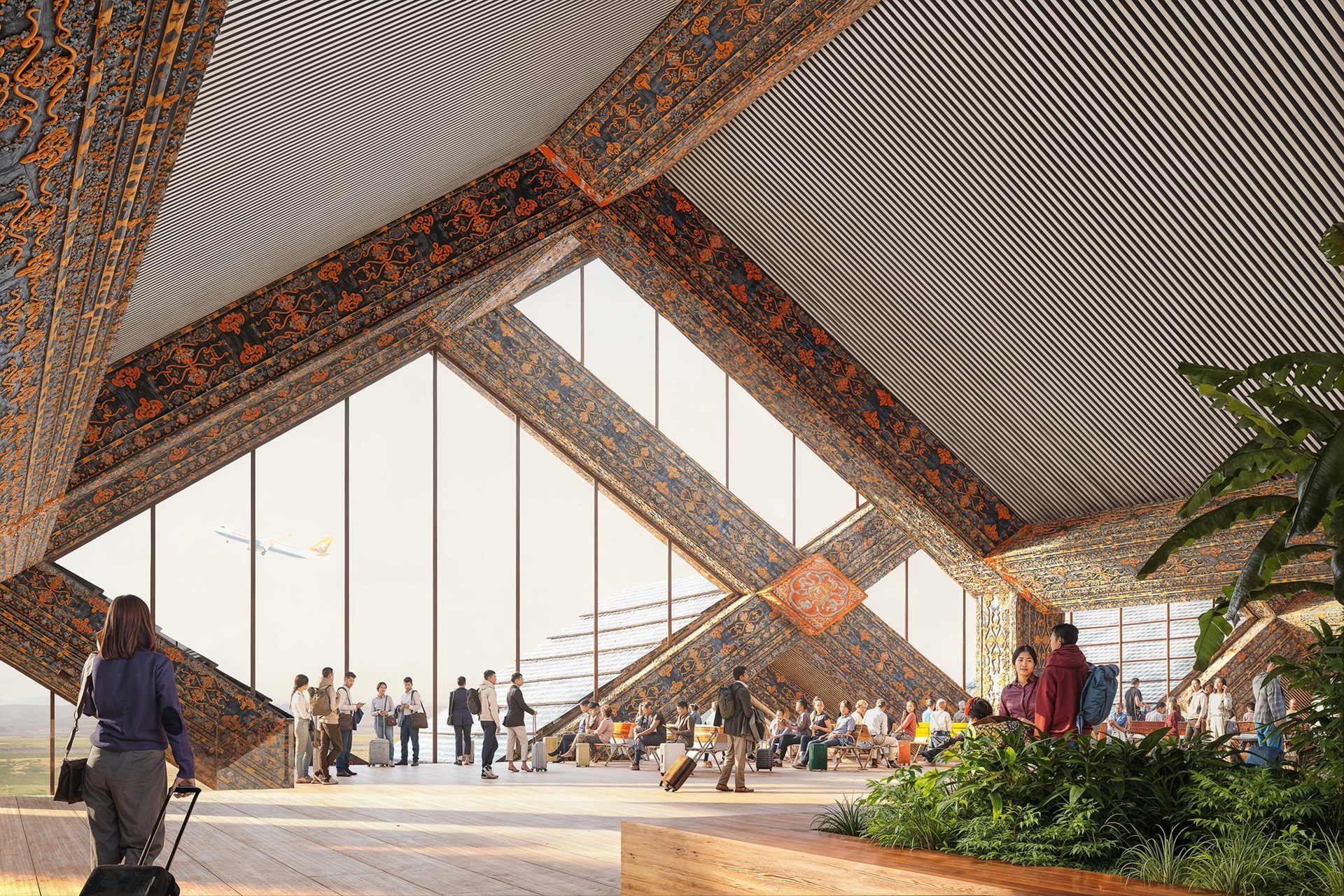
Celebrating Bhutanese Craftsmanship
Every aspect of the Gelephu International Airport is a celebration of Bhutanese culture, showcasing regional craftsmanship including Shing-Zo (carpentry), Par-Zo (carving), Lha-Zo (painting), and Tshar-Zo (traditional weaving techniques). The traditional Bhutanese carvings extend from exterior to interior.
Designed to instil mindfulness into the often-stressful experience of traveling, the airport is bathed in natural light, with a grand triple-height entry, expansive floor-to-ceiling windows, and skylights. Indoor and outdoor lounges provide tranquil spaces for yoga, gong baths, and meditation for travelers to recenter and recharge, embodying Bhutan’s values of happiness and psychological well-being.
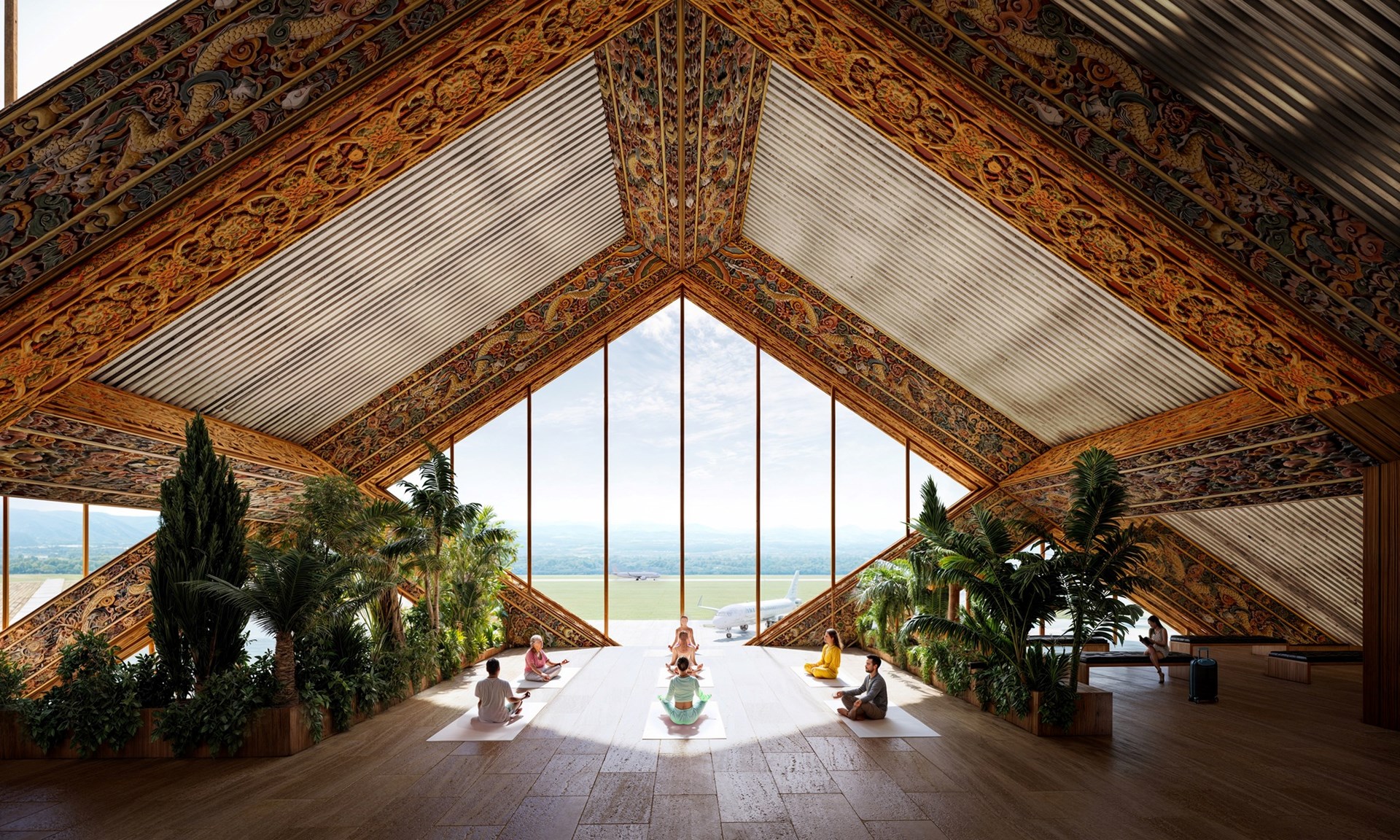
Human-Centred and Climate-Conscious Design
The Gelephu International Airport’s layout is driven by passenger experience and operational efficiency. Intuitive wayfinding through clear visual cues and thoughtfully designed circulation paths ensures a smooth journey from arrival to gate. Gates are situated on the upper level alongside retail and food and beverage areas, offering expansive views of the apron and the dramatic Himalayan landscape.
Adapting to the subtropical climate of Southern Bhutan, the airport incorporates climate-responsive, passive designs seen in traditional Bhutanese architecture. Its wooden structure absorbs moisture from the air, helping to regulate indoor humidity, while ventilated roofs and courtyards encourage natural airflow. Outside, extended eaves provide shade and protect against heavy rainfall. The airport will also become Bhutan’s first in-land mobility hub, promoting the use of public transportation with easily accessible trackless trams and buses that connect to Gelephu’s revitalised town centre and the rest of the country.
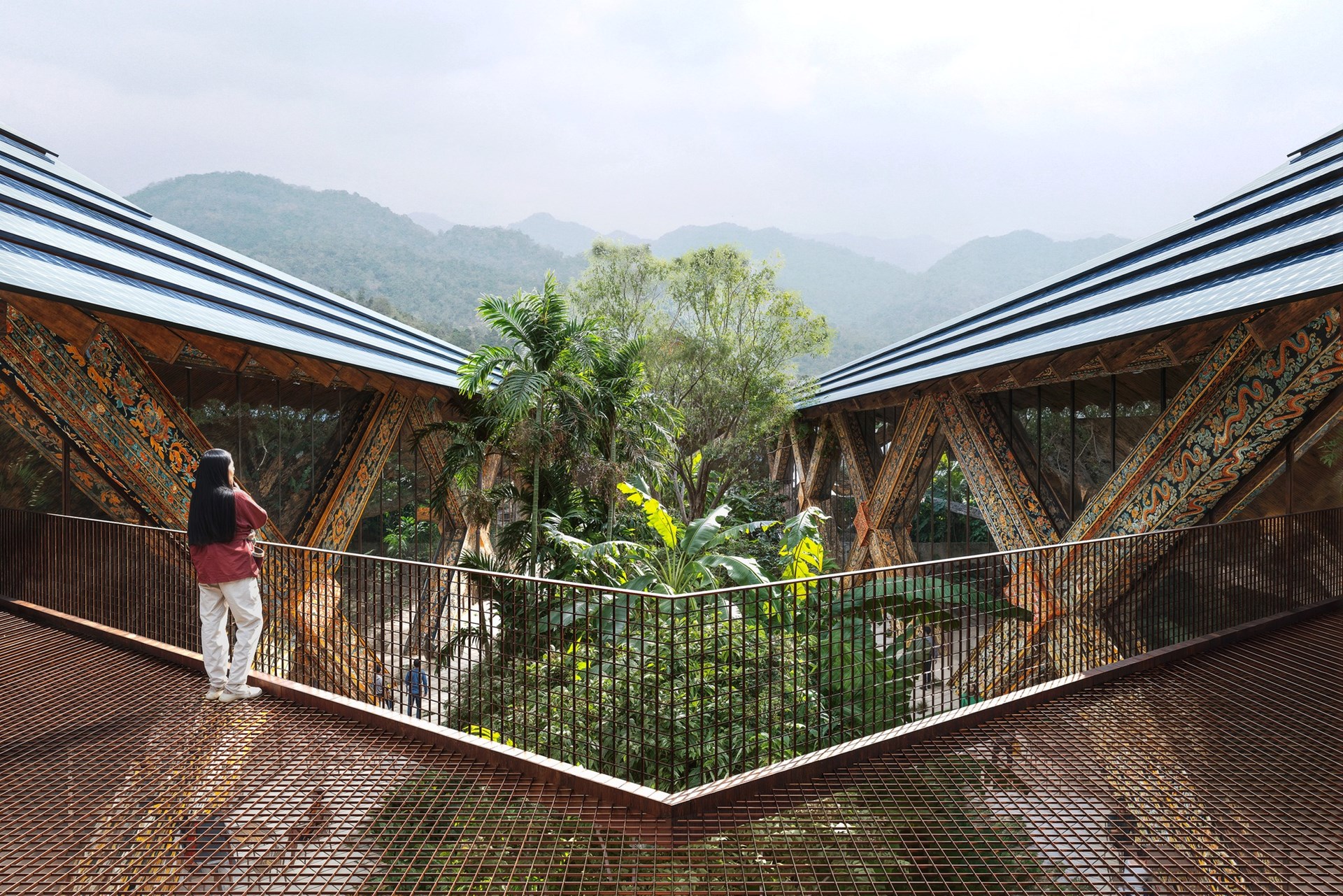
A Gateway that Embodies Bhutan’s Future
Grounded in Bhutanese culture, Gelephu International Airport aims to establish itself as a global gateway into GMC that honours history while embracing the future, creating a welcoming atmosphere that reflects the spirit of GMC at every stage of the journey. The airport is set to open in 2029.
Groundbreaking ceremony for the Gelephu International Airport was held on the 8th July 2025, graced by His Majesty King Jigme, Her Majesty Queen Jetsun, accompanied by Their Royal Highnesses Gyalsey Jigme Namgyel and Gyalsey Ugyen Wangchuck.
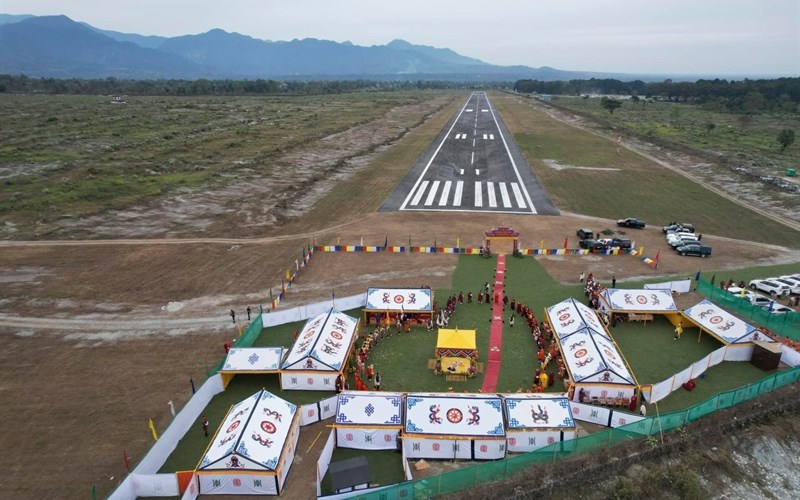
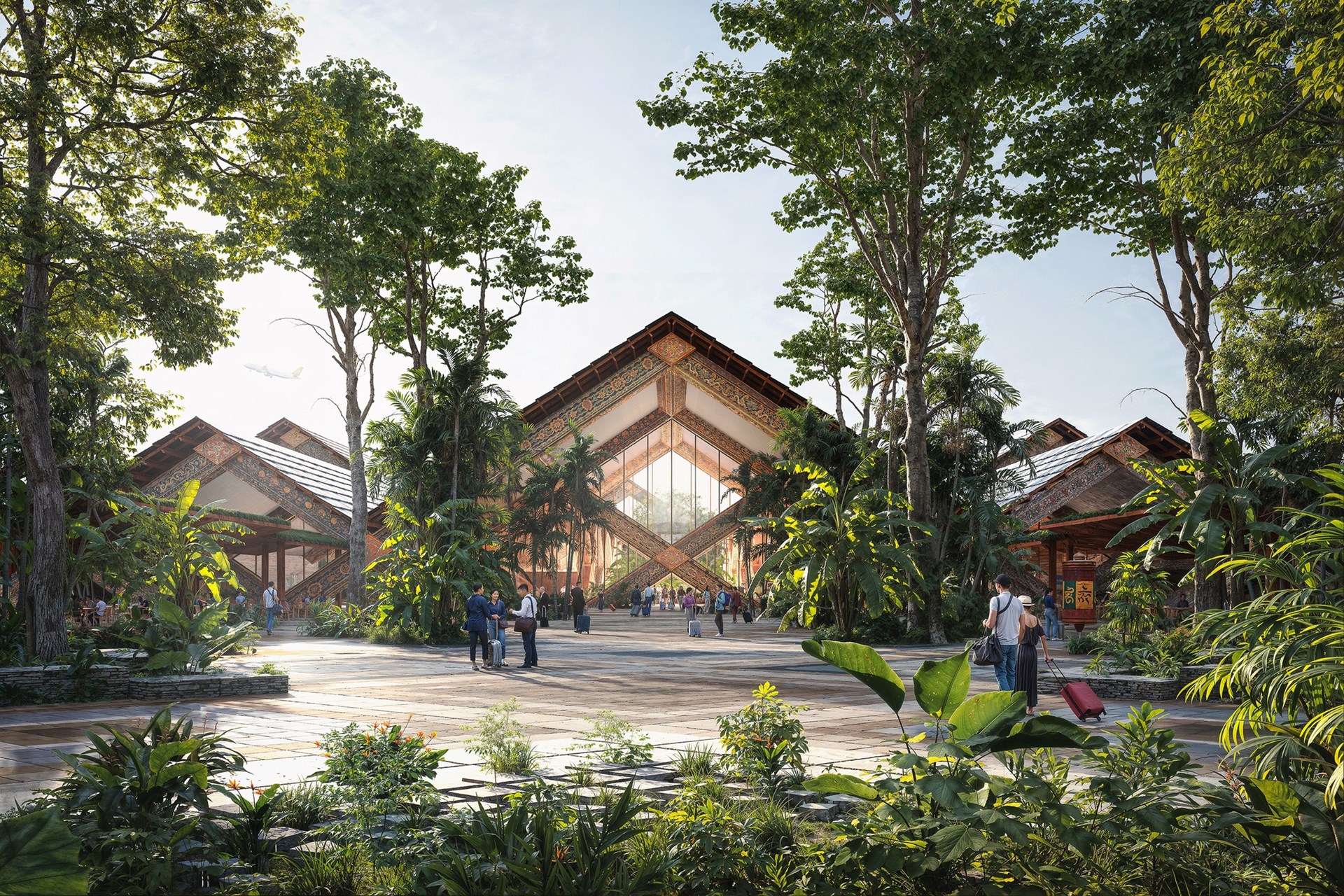
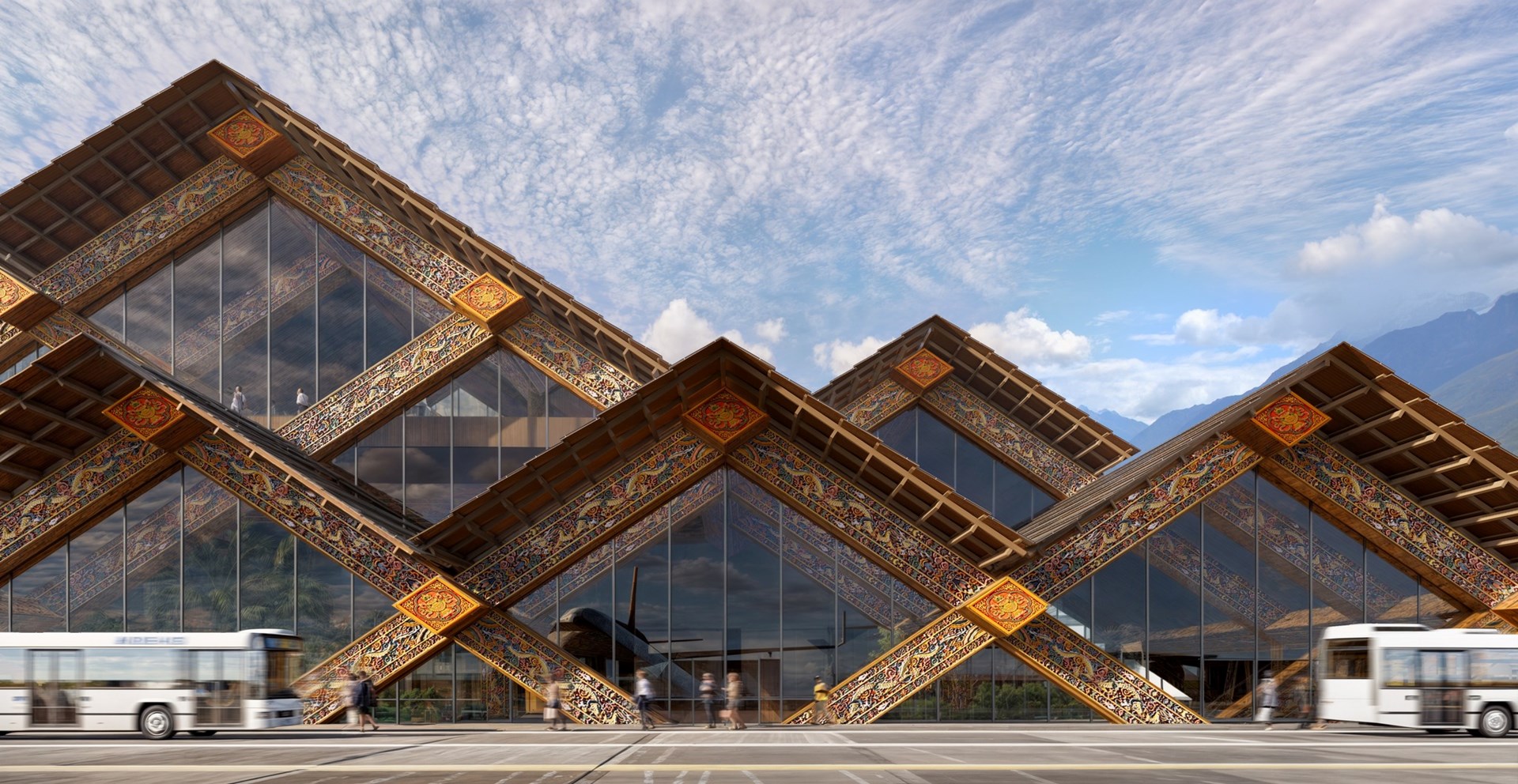
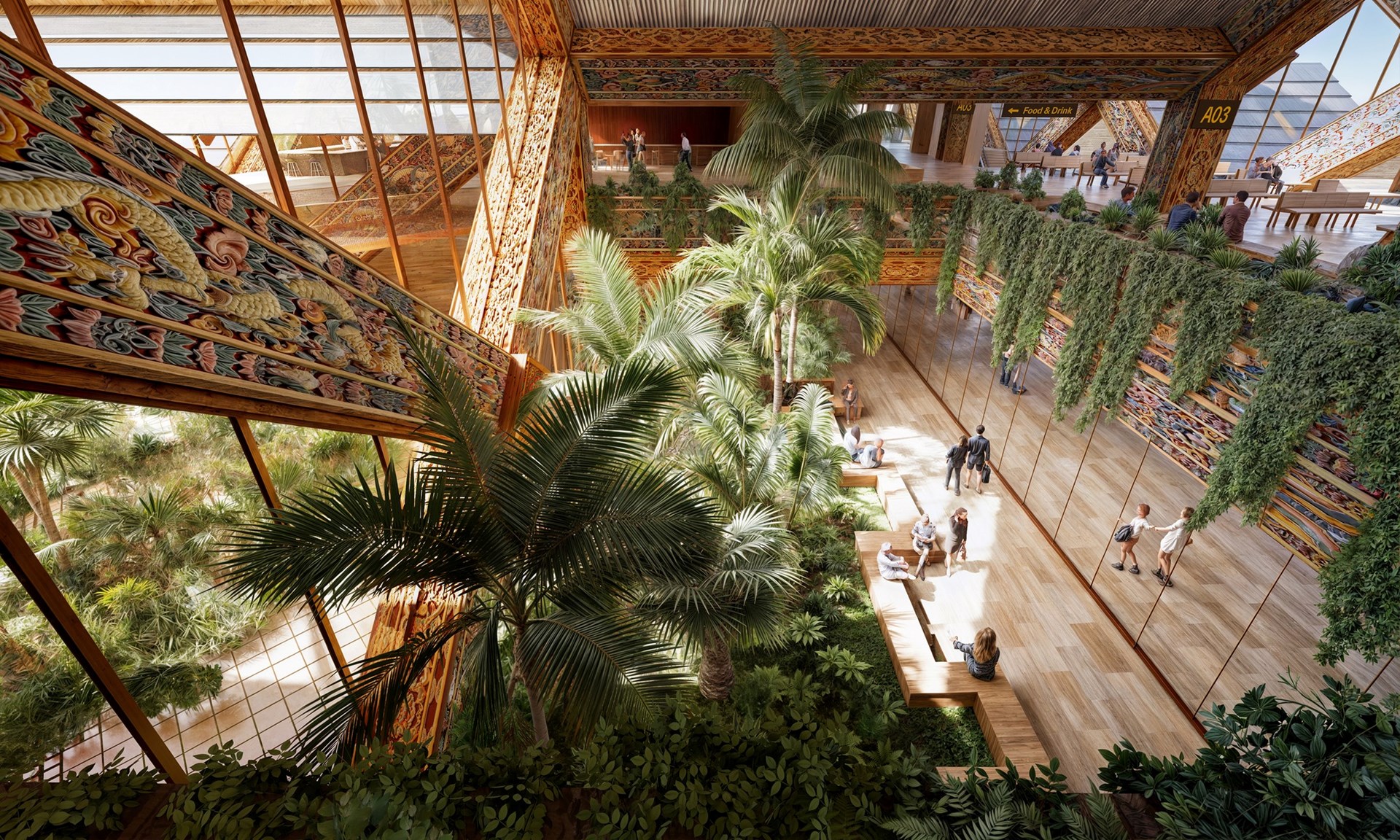
Images credit: Bjarke Ingels Group
Gelephu International Airport Project Team
Douglas Barclay
Eddie Can
Tommaso Ridolfi
Partner in Charge
Bjarke Ingels
Frederik Lyng
Giulia Frittoli
Project Manager
Per Bo Madsen
Design Lead
Dace Gurecka
Sorcha Burke
Project Team
Andrea Hektor
Chiara Gargiulo
Dalma Ujvari
Jan Magasanik
Jeppe Langer
Kai-Brith Kalda
Mantas Povilaika
Matthew Goodwill
Nanna Gyldholm Møller
Nathan Angelo Osena
Nikol Maraj
Will Chuanrui Yu
Xinyu Zhao
COLLABORATORS
NACO International Aviation Consultancy
MQDC
Changi Airport Planners and Engineers
InFluit
WT Partnership














